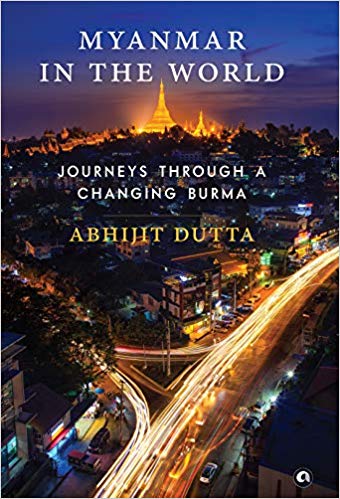Not many Indian writers have written books on Myanmar in recent times touching on its political history. Amitav Ghosh’s classic Glass Palace, even if in a fictional setting, brought to us graphic pictures of colonial Burma. Sudha Shah in her book The King in Exile gave a poignant account of the troubles undergone by King Thibaw, the last King of Burma, who was deposed and exiled by the British to Ratnagiri in India, with his Queen and descendants. A few Indian academics and former diplomats have also written books on relations between India and Myanmar. Abhijit Dutta’s most recent book Myanmar in the World falls in the genre of a research supported account of happenings in that country but in the form of a travelogue. It is a commendable effort by the young author.
Dutta’s book is the outcome of observing the fast-changing events in Myanmar over a period of six years from 2012. Smitten by the country after an initial visit coinciding with the by-elections in which Aung San Suu Kyi and her National League for Democracy (NLD) Party were taking part for the first time, after long periods of house arrests, the author made repeated visits to various parts of the country and its historical towns. He has drawn material for the book based on meeting people, understanding their regional heritage and religious identities and listening to the past glories and disappointments of the communities. It is however more than a simple travelogue and has in fact avoided giving too much attention to ‘touristy’ places. In its own style, the book has analysed the key issues facing the country and what may be the outlook for the future.
Myanmar is a relatively large country with a land area that exceeds the combined area of India’s six southern States. Its population at a little over 50 million is however less than that of either Karnataka or Tamil Nadu. The Bamar Buddhists are in a majority but residing mainly in the middle and lower plains of Myanmar. They are surrounded by ethnic groups that follow mostly either Buddhist or Christian faiths who have settled in the neighbouring hillsides in the form of an inverted ‘U’. The resource rich country has been striving for internal peace and stability ever since Independence but ethnic rebel groups are still active in several borderlands. These have unfortunately not dissipated with the move to what may be described as a quasi democracy (the country’s constitution calls it a disciplined multi- party democratic system) since 2011.

